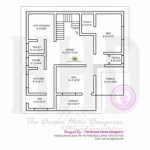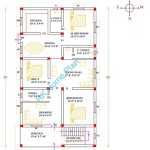Early New England Cape House Plans: A Legacy of Simplicity and Functionality
In the early days of New England, settlers faced the challenge of building homes that were both practical and affordable. The Cape house, with its simple rectangular shape, central chimney, and lean-to addition, emerged as the ideal solution. These charming dwellings, characterized by their unpretentious design and efficient use of space, have stood the test of time and continue to be admired for their enduring charm.Origins and Evolution of the Cape House
The Cape house traces its roots to the traditional English cottage, brought to the New World by early colonists. Over time, the design underwent modifications to adapt to the unique climate and lifestyle of New England. The central chimney, a defining feature of the Cape house, served as the heart of the home, providing warmth and facilitating cooking and heating. The lean-to addition, often found at the rear of the house, provided additional living space, typically used as a kitchen or workshop.Key Characteristics of Early New England Cape Houses
*Rectangular Shape:
Cape houses are typically rectangular in shape, with a simple and unadorned facade. The symmetry and balance of the design create a sense of harmony and order. *Central Chimney:
The central chimney is a prominent feature of the Cape house, often located in the center of the house. It served as a functional element for heating and cooking, and also as a structural support for the roof. *Steeply Pitched Roof:
The roof of a Cape house is typically steeply pitched, a design feature that sheds water and snow effectively. The steep pitch also creates a sense of height and grandeur, adding to the house's charm. *Lean-to Addition:
Many Cape houses feature a lean-to addition, usually at the rear of the house. This addition provided extra living space, often used as a kitchen, pantry, or workshop. *Interior Layout:
The interior of a Cape house is typically simple and functional. The central chimney divides the house into two main rooms on the first floor, with a staircase leading to the second floor. The second floor typically consists of one or more bedrooms.Enduring Legacy of the Cape House
The Cape house has left an indelible mark on New England architecture. Its simple lines, functional design, and enduring charm have made it a timeless classic. Today, Cape houses continue to be built, both as historic restorations and as modern interpretations of the traditional design. These homes offer a sense of connection to the past while providing comfortable and stylish living spaces.Conclusion
The Cape house, with its simple design, efficient use of space, and enduring charm, stands as a testament to the ingenuity and practicality of early New England settlers. As we admire these historic homes today, we appreciate their timeless beauty and the legacy they have left on American architecture.
Cape Early New England Homes

Cape Early New England Homes

Cape Cod Homes Hebron Ct Early New England

Cape Houses And Homes By Early New England Colonial House Exteriors Exterior

Build Your Cape Cod Home Early New England

Classic And Cool Cape Cod House Plans We Love Houseplans Blog Com

A Small Vernacular Cape Style House In New England Cod Plans Exterior Homes

Elbring New England Style Home Homes Colonial House Plans Cape Cod

Cape Cod Architecture

What Is A Cape Cod Style House Architectural








